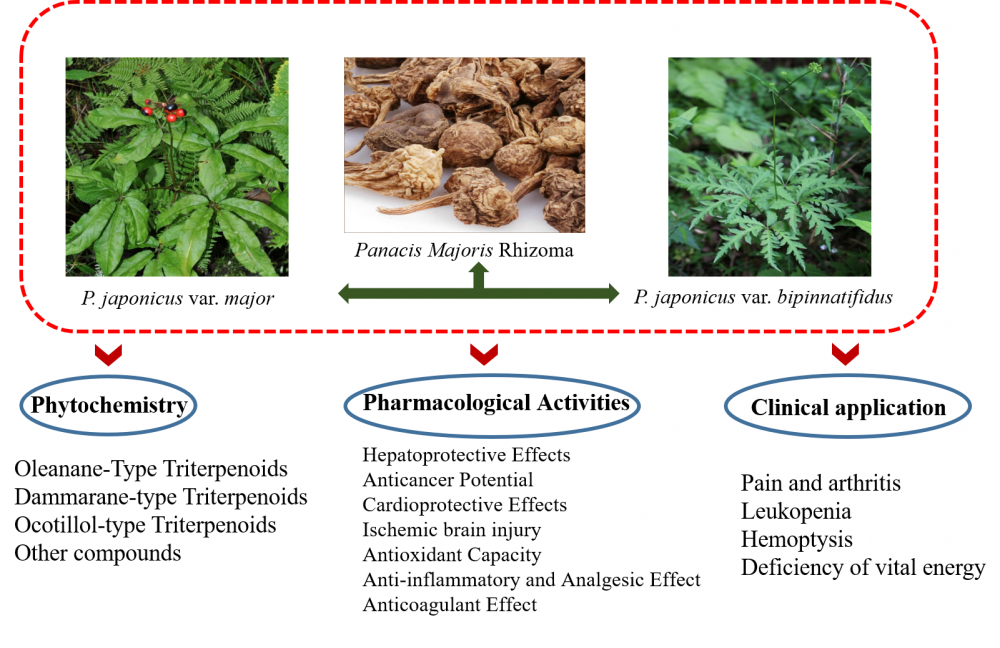JOURNAL 2917
Records of Natural Products
Year: 2024 Issue: 1 January-February
p.53 - 94
Viewed 1609 times.
GRAPHICAL ABSTRACT

ABSTRACT
Panacis majoris Rhizoma (PMR) is a traditional Chinese medicine with tonic, hemostatic, and pain-relieving properties, classified under the genus Panax in the family Araliaceae. With a lengthy history of folk usage, PMR holds considerable potential for further development and exploration. Modern research indicates that saponins are the main active constituents. To date, a total of 122 compounds have been isolated from PMR, with the vast majority being triterpenoid saponins. In addition, there are small amounts of flavonoids, aromatic hydrocarbons, alkynes, and volatile oils. Pharmacological studies have demonstrated that compounds and extracts from PMR exhibit notable activities, including hepatoprotective, anti-cancer, cardioprotective, anti-ischemic brain injury, antioxidant, anti-inflammatory, analgesic, and anticoagulant effects. These compounds, serving as precursor molecules for drug development, are of significant value. This article provides a comprehensive review of PMR’s botany, phytochemistry, pharmacology, and clinical applications, offering valuable insights for its subsequent development and resource utilization.
KEYWORDS- Panacis majoris
- phytochemistry
- pharmacology
- clinical applications